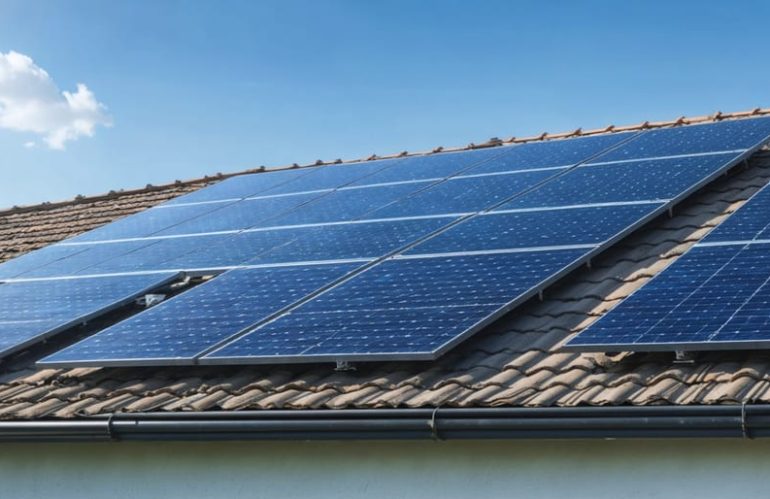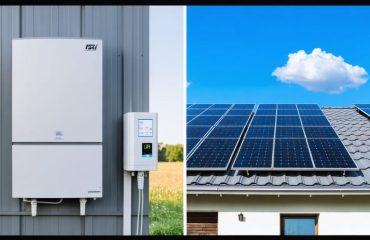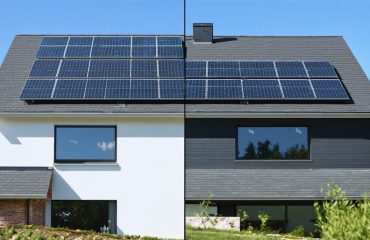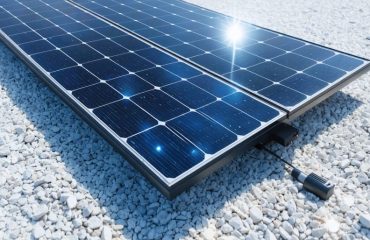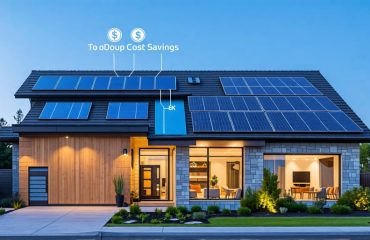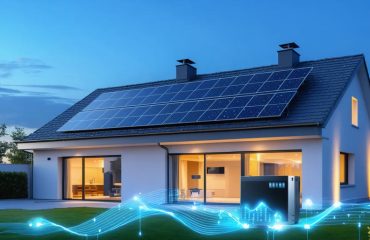When it comes to powering your home with solar energy, the choice between monocrystalline and polycrystalline solar panels can significantly impact your long-term satisfaction and savings. These two leading solar technologies each offer distinct advantages, with monocrystalline panels known for their superior efficiency and sleek appearance, while polycrystalline panels provide a more budget-friendly alternative without compromising reliability.
As homeowners increasingly turn to solar power to reduce both their carbon footprint and electricity bills, understanding the key differences between these panel types has never been more important. Recent advances in manufacturing have narrowed the performance gap between mono and poly panels, making the decision more nuanced than ever before. Whether you’re prioritizing maximum power output for limited roof space or seeking the best value for your investment, this comparison will help you make an informed choice that aligns with your specific needs and circumstances.
What Makes These Solar Panels Different?
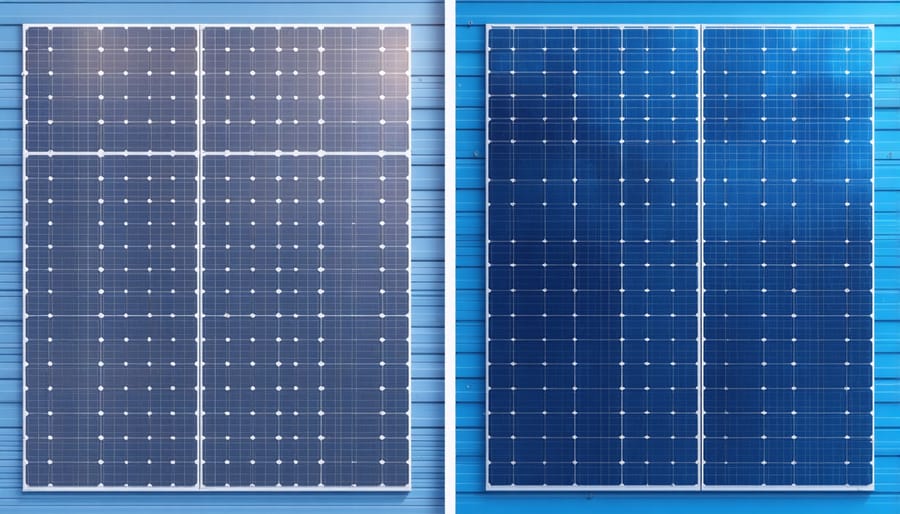
Manufacturing Process: Why It Matters
The manufacturing process plays a crucial role in determining both the efficiency and cost of solar panels. Monocrystalline panels are made from a single, pure silicon crystal that’s grown slowly and carefully cut into wafers. Think of it like carving a sculpture from a single block of marble – it’s precise but involves more waste and time, which explains their higher cost.
Polycrystalline panels, on the other hand, are created by melting multiple silicon fragments together and allowing them to cool in a mold, similar to making a chocolate bar. This faster, less resource-intensive process makes them more affordable but results in less efficient panels due to the boundaries between crystal fragments that slightly impede electron flow.
The pure, uniform structure of monocrystalline panels allows electrons to flow more freely, resulting in higher efficiency ratings. Meanwhile, the varied crystal structure in polycrystalline panels creates more resistance to electron movement, slightly reducing their performance but offering significant cost savings in return.
Real-World Performance Comparison
Efficiency and Space Requirements
Monocrystalline panels lead the way in efficiency, typically converting 15-22% of sunlight into electricity. This higher efficiency means you’ll need fewer panels to meet your energy needs, making them ideal for homes with limited roof space. A 6kW system using monocrystalline panels might require only 20 panels, compared to 24 polycrystalline panels for the same output.
Polycrystalline panels, while slightly less efficient at 13-17%, still offer reliable performance for many homeowners. Their lower efficiency means you’ll need about 15-20% more roof space to achieve the same power output as monocrystalline panels. However, this difference becomes less significant if you have ample installation space available.
Both panel types work well in sunny conditions, but monocrystalline panels have a slight edge in low-light situations and high temperatures. This makes them particularly valuable in partially shaded areas or regions with variable weather conditions. For most homeowners, the choice often comes down to balancing available space against budget considerations rather than efficiency alone.
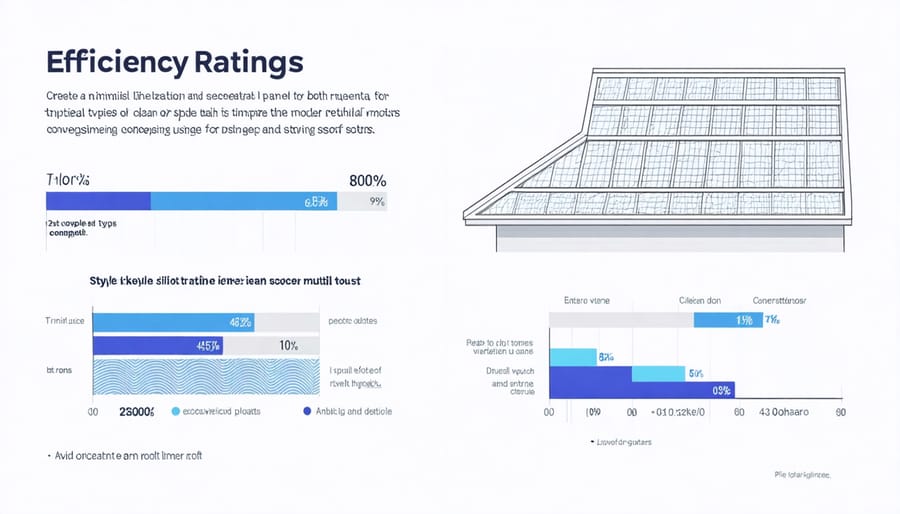
Temperature Performance
Both monocrystalline and polycrystalline solar panels show different performance characteristics when it comes to temperature. Monocrystalline panels generally perform better in hot weather, with a typical efficiency loss of 0.3-0.4% for every degree Celsius increase above 25°C (77°F). Their superior heat tolerance makes them an excellent choice for warm climates.
Polycrystalline panels, while still effective, tend to be slightly more sensitive to high temperatures, with efficiency drops of 0.4-0.5% per degree Celsius above optimal temperature. However, both types perform similarly in cold weather, and contrary to common belief, cooler temperatures actually improve the efficiency of all solar panels.
During cloudy days or in areas with varying weather conditions, monocrystalline panels have a slight edge in maintaining consistent power output. This makes them particularly suitable for regions with unpredictable weather patterns, though both types will continue to generate electricity even in less-than-ideal conditions.
Lifespan and Durability
Both monocrystalline and polycrystalline solar panels offer impressive longevity, typically lasting 25-30 years with proper maintenance. While monocrystalline panels generally show slightly better durability due to their single-crystal structure and superior solar panel quality factors, both types maintain their efficiency well over time. Monocrystalline panels tend to experience a degradation rate of about 0.5% annually, while polycrystalline panels degrade at roughly 0.6% per year.
Maintenance requirements are virtually identical for both panel types. Regular cleaning to remove dust and debris, occasional inspection for damage, and ensuring proper positioning are all that’s typically needed. Both varieties are designed to withstand various weather conditions, including heavy rain, snow, and hail. Most manufacturers offer warranties ranging from 20-25 years, reflecting their confidence in the panels’ long-term performance and reliability.
Cost vs. Value: Making the Smart Choice
Initial Investment Comparison
When comparing initial investments, monocrystalline solar panels typically cost 10-15% more than their polycrystalline counterparts. While overall solar panel installation costs vary by region and provider, you can expect to pay between $1.00 to $1.50 per watt for polycrystalline panels and $1.20 to $1.80 per watt for monocrystalline panels.
This price difference stems from the manufacturing process. Monocrystalline panels require higher-grade silicon and a more complex production method, resulting in higher costs. However, it’s important to consider that the higher initial investment in monocrystalline panels often translates to better efficiency and space utilization, which could mean fewer panels needed overall.
For a typical 6kW home system, this difference might amount to $1,000-$2,000 more for monocrystalline panels. While this may seem significant upfront, the long-term benefits of increased efficiency and improved performance in varied conditions can offset the initial cost difference over the system’s lifetime.
Long-Term Savings Analysis
When it comes to long-term savings, both monocrystalline and polycrystalline panels offer excellent returns on investment, though their payback periods differ slightly. Monocrystalline panels typically pay for themselves in 5-7 years, while polycrystalline panels usually take 6-8 years, depending on your location and energy consumption.
Despite their higher upfront cost, monocrystalline panels often provide better lifetime value due to their superior efficiency and longer lifespan of 25-30 years. A typical homeowner can save between $20,000 and $30,000 over the panels’ lifetime with mono panels, compared to $15,000 to $25,000 with poly panels.
However, if you live in an area with lower electricity rates or have ample roof space, polycrystalline panels can deliver comparable savings at a lower initial investment. The key is to consider your specific circumstances – a sunny climate and high electricity rates make the premium efficiency of mono panels more valuable, while moderate climates might make poly panels the more cost-effective choice.
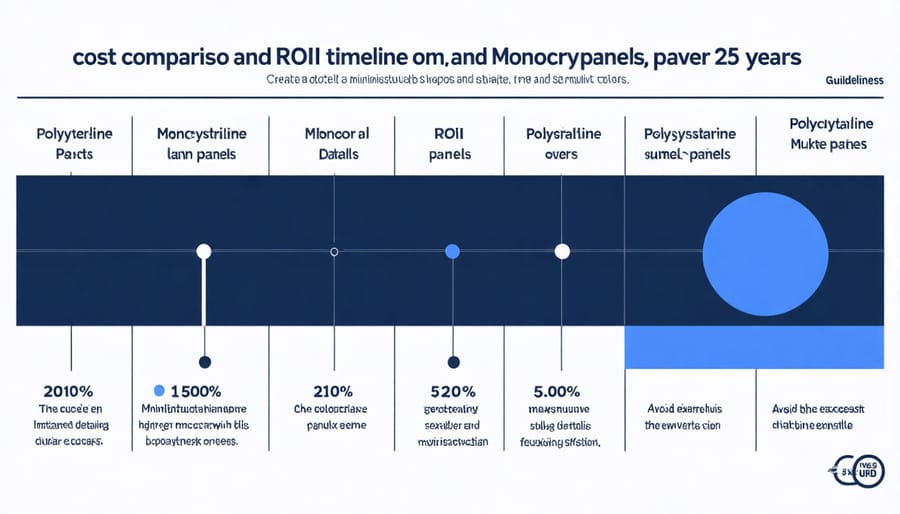
Which Panel Type Is Right for Your Home?
Choosing the right solar panel type depends on your specific circumstances and priorities. To help you make an informed decision, let’s look at scenarios where each type shines.
Monocrystalline panels are ideal if:
– You have limited roof space and need maximum efficiency
– You live in a region with frequent cloudy weather or lower sun exposure
– You’re willing to invest more upfront for long-term performance
– Aesthetic appearance is a priority for your home
– You want panels that typically last longer and come with extended warranties
Polycrystalline panels make more sense when:
– You’re working with a tighter budget
– You have ample roof space to accommodate more panels
– You live in a consistently sunny climate
– You’re less concerned about the blue-tinted appearance
– You’re looking for best value solar panels with good performance
Consider these additional factors when making your choice:
– Local climate conditions and seasonal changes
– Your home’s orientation and available sunlight
– Current and future energy needs
– Local installation costs and available incentives
– HOA restrictions or architectural guidelines
Remember that both panel types are proven technologies that can effectively power your home. The “best” choice often comes down to balancing your budget, space constraints, and energy requirements. Many homeowners find that mixing both types can provide an optimal solution, using monocrystalline panels in partially shaded areas and polycrystalline in full-sun locations.
Consult with local solar installers who can assess your specific situation and provide customized recommendations based on your home’s unique characteristics and energy needs.
Whether you choose monocrystalline or polycrystalline solar panels, you’re making a positive step toward sustainable living and energy independence. Monocrystalline panels offer superior efficiency and a sleek appearance, making them ideal for homes with limited roof space or those in regions with variable weather conditions. While they come at a higher price point, their long-term energy production often justifies the investment.
Polycrystalline panels, on the other hand, provide a more budget-friendly option without significantly compromising performance. They’re particularly suitable for homes in consistently sunny areas with ample roof space. Their lower upfront cost makes solar energy more accessible to a broader range of homeowners.
To make your final decision, consider your specific circumstances: your available roof space, local climate, budget, and aesthetic preferences. We recommend getting quotes from several solar installers who can assess your unique situation and provide customized recommendations. Remember, both options are proven technologies that can significantly reduce your energy bills while helping the environment.

